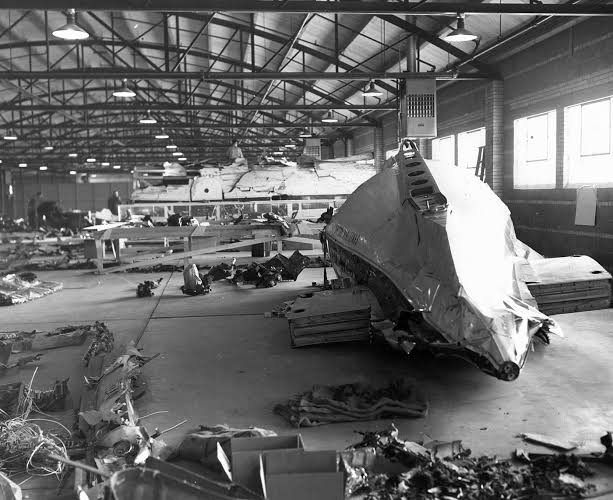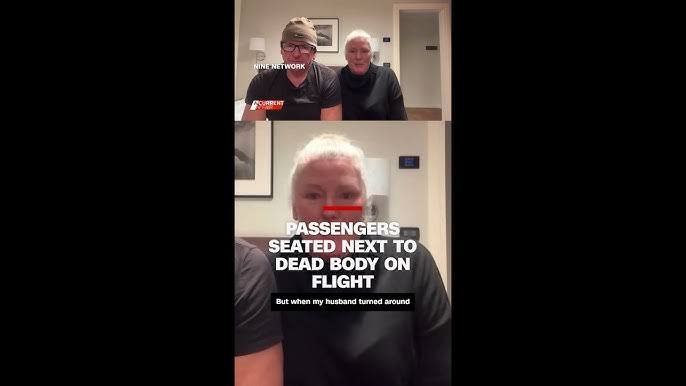“United Airlines Flight Bombing: Tragic Mid-Air Explosion Claims 44 Lives Near Denver
United Airlines Flight 629 Bombing: Tragic Mid-Air Explosion Claims 44 Lives Near Denver in
On November 1, 1955, a tragedy unfolded in the skies above Colorado that would forever alter the course of aviation history. United Airlines Flight 629, a scheduled flight from Denver to Portland, Oregon, was tragically destroyed mid-air in a bombing that claimed the lives of all 44 people aboard. The event became one of the deadliest and most notorious aviation disasters in the United States at the time, prompting sweeping changes in security measures, aviation regulations, and the way the airline industry would operate moving forward.
The Fateful Flight
United Airlines Flight 629 was a Douglas DC-6 aircraft, a popular model at the time for its capacity and range. The plane had departed from Denver’s Stapleton Airport around 6:00 PM, bound for Portland. The flight, which was meant to take just over two hours, seemed like any other regular evening flight, with passengers aboard ranging from business travelers to families looking forward to reunions and holidays. The flight was initially uneventful, cruising through the skies at 19,000 feet, and was well on its way to reaching its destination.
However, tragedy struck when the plane was roughly 12 minutes into its journey. Shortly after passing the town of 
There were no survivors. All 44 passengers and crew members aboard the flight were killed instantly.
The Investigation and Discovery of the Bomb
In the aftermath of the explosion, authorities quickly launched an extensive investigation to determine the cause of the crash. At first, investigators were puzzled, as the wreckage did not immediately point to any obvious mechanical failure or pilot error. However, as they examined the debris, it became clear that the cause of the explosion was not accidental. It was soon determined that the aircraft had been the target of a deliberate bombing.
The investigation revealed that the bomb had been placed in the cargo hold of the plane, disguised as a normal suitcase. Upon closer examination, investigators found traces of explosives, which had been carefully packed into the suitcase. The bomb had been detonated while the plane was still in flight, causing an explosive decompression that ripped apart the fuselage and brought the aircraft down in flames. The damage to the aircraft was so severe that no one aboard could have survived.
The FBI was called in to lead the investigation, given the potential criminal nature of the incident. Soon after, the authorities discovered the identity of the perpetrator: Jack Gilbert Graham, a 23-year-old Denver resident. Graham had been on board the flight with his mother, who was one of the 44 victims. It was revealed that Graham had placed the bomb in his mother’s suitcase in a bid to collect the life insurance money that he had taken out on her. The motive for the bombing was rooted in Graham’s financial troubles. By killing his mother and the others aboard the flight, Graham hoped to claim a substantial insurance payout.
The Arrest and Trial of Jack Graham
Once it was clear that the bombing had been a calculated act of murder, authorities swiftly arrested Jack Graham. His arrest was the result of a combination of physical evidence, witness testimonies, and his own actions leading up to the flight. Graham had purchased the life insurance policy under his mother’s name and had been heavily in debt at the time. Further investigation revealed that he had shown no remorse for the actions he had taken and was believed to have meticulously planned the bombing to maximize his financial gain.
During his trial, Graham’s defense argued that he was mentally unstable at the time of the bombing, but the prosecution successfully countered by showing the extent of his planning and the cold, calculated nature of his crime. In the end, Graham was convicted of 44 counts of first-degree murder and was sentenced to death. He was executed by lethal injection on January 11, 1957, marking the first execution in Colorado after the state’s death penalty laws were reinstated.
The case was a stark reminder of the vulnerability of the aviation industry to criminal acts. It also set a precedent for how the airline industry would begin to handle security measures going forward, particularly in relation to passengers’ baggage and cargo.
The Impact on Aviation Security
The bombing of United Airlines Flight 629 had far-reaching consequences for the aviation industry. At the time, security measures at airports were minimal. Passengers were able to carry large amounts of baggage without the level of scrutiny that is commonplace today, and checks for explosives or dangerous items were virtually nonexistent. The bombing exposed the need for greater safety protocols and led to the introduction of stringent baggage screening procedures.
In response to the attack, the U.S. government implemented a series of regulations aimed at improving aviation security. One of the first significant changes was the creation of the Federal Aviation Agency (FAA), which was tasked with regulating air travel safety. The FAA’s first major directive was to require all checked luggage to be screened for explosives and other dangerous materials. This led to the development of modern airport security measures, such as the use of x-ray machines and metal detectors.
In addition, airlines began to implement more comprehensive procedures for screening passengers and their belongings. While these measures were still in their infancy in the 1950s, they laid the foundation for the rigorous security processes that are now in place at airports around the world. Furthermore, the bombing highlighted the need for better communication and coordination between law enforcement agencies and the aviation industry to prevent similar incidents.
Remembering the Victims
The bombing of United Airlines Flight 629 remains a somber chapter in the history of aviation and continues to be remembered as one of the most tragic and senseless acts of violence in the skies. While the investigation and subsequent trial brought justice to the families of the victims, the emotional scars left by the bombing lingered for many years.
In the years following the tragedy, family members of the victims have held memorials to honor those who perished in the attack. Several documentaries and books have been written about the bombing, and the event has become a significant part of the collective memory of aviation safety in the United States. The tragedy served as a stark reminder of the vulnerabilities inherent in air travel and the importance of ensuring the safety and security of passengers.
A Legacy of Aviation Security
The bombing of United Airlines Flight 629 not only changed the lives of the families of the victims but also had a lasting impact on the airline industry. It prompted the adoption of new security measures that would ultimately make air travel safer for millions of passengers around the world. While the event itself was a tragedy of monumental proportions, it also served as a catalyst for progress in aviation safety and security.
As we look back on the bombing and its aftermath, it is clear that the lessons learned from United Airlines Flight 629 were vital in shaping the modern aviation landscape. Today, the memories of those 44 lives lost continue to be honored, and their sacrifice paved the way for a safer future in the skies.






